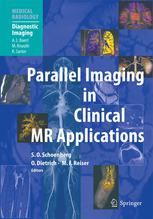

Most ebook files are in PDF format, so you can easily read them using various software such as Foxit Reader or directly on the Google Chrome browser.
Some ebook files are released by publishers in other formats such as .awz, .mobi, .epub, .fb2, etc. You may need to install specific software to read these formats on mobile/PC, such as Calibre.
Please read the tutorial at this link: https://ebookbell.com/faq
We offer FREE conversion to the popular formats you request; however, this may take some time. Therefore, right after payment, please email us, and we will try to provide the service as quickly as possible.
For some exceptional file formats or broken links (if any), please refrain from opening any disputes. Instead, email us first, and we will try to assist within a maximum of 6 hours.
EbookBell Team

5.0
70 reviewsParallel imaging techniques have only recently been introduced into magnetic resonance imaging (MRI) in clinical routine, but they have already gained wide clinical acceptance in numerous applications. Their substantial advantages in terms of higher spatial and temporal resolution and improved image quality have revolutionized the role of MRI in many areas of comprehensive disease imaging.
This book presents the first in-depth introduction to parallel imaging techniques and, in particular, to the application of parallel imaging in clinical MRI. It will provide readers with a broader understanding of the fundamental principles of parallel imaging and of the advantages and disadvantages of specific MR protocols in clinical applications in all parts of the body at 1.5 and 3 Tesla.
The first part of the book explains relevant MRI physics and techniques, detailing the various image reconstruction algorithms for parallel imaging. The second part presents detailed, ready-to-use clinical protocols for morphologic, angiographic, and functional MR imaging, with special emphasis on problem-solving strategies for assessment of cardiovascular and oncological diseases. In addition, detailed information is provided on cutting-edge techniques such as diffusion tensor imaging, oxygen-enhanced lung imaging, and MRA with blood pool contrast agents.